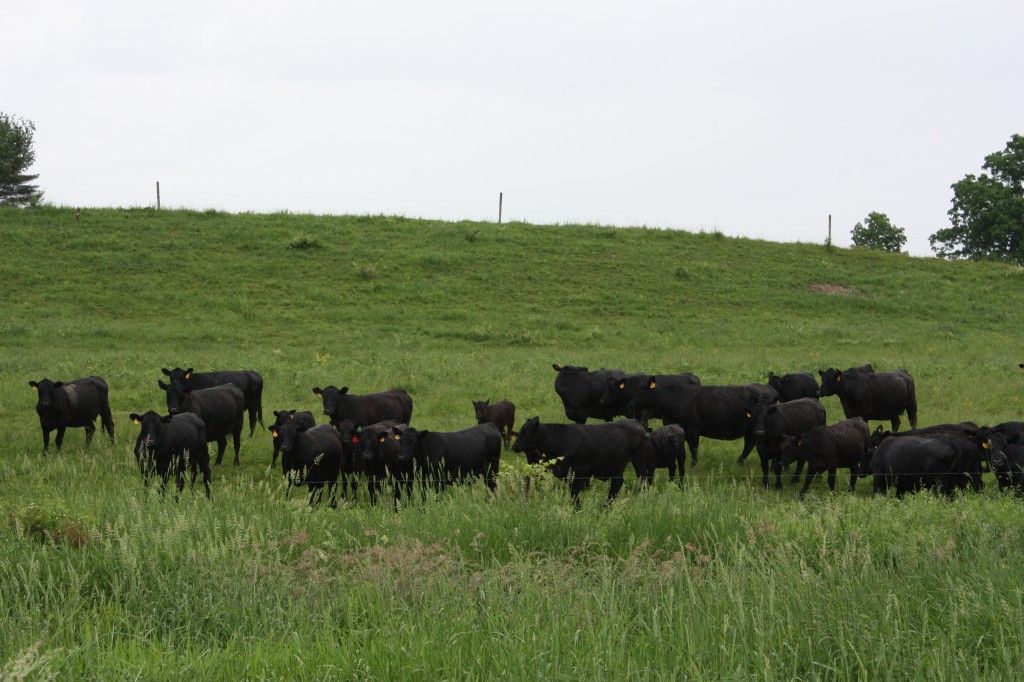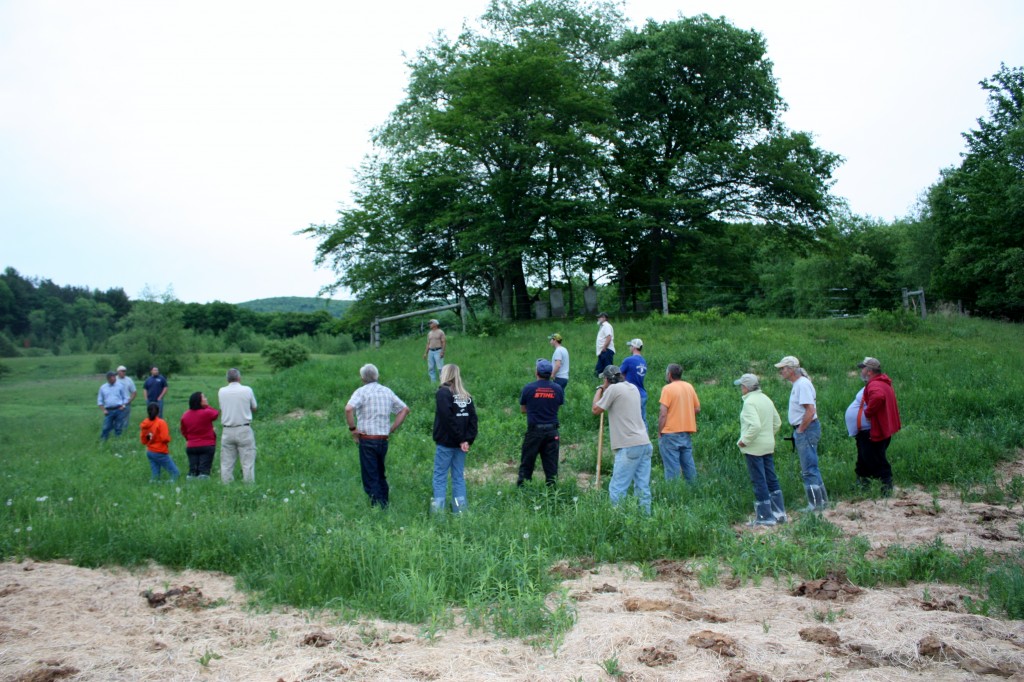“Healthy soil is darker in color, crumbly, and porous. It is home to worms and other organisms that squirm, creep, hop, or crawl. Healthy soil provides the right amount of air, water, and organic matter for microorganisms to thrive and for plants to grow” (1). Healthy soil is the backbone of a healthy, productive farm.
The ideal soil will have an earthy smell, is easy to dig into, moist, and full of life. By using correct grazing management practices, you may be able to maintain and improve the health of your land. Why is soil health so important? Healthy soils have “increased organic matter, more soil organisms, reduced soil compaction and improved nutrient storage and cycling. As an added bonus, fully functioning, healthy soils absorb and retain more water, making them less susceptible to runoff and erosion. This means more water will be available for crops when they need it” (2).
Although we can learn a great deal by simply observing the pasture, actually digging in, using a penetrometer, and taking soil tests will give you a more complete picture. Focusing mostly on the importance of organic matter, Black Queen Angus Farm, LLC. (http://blackqueenangus.com/) hosted a Cornell Cooperative Extension meeting called “Grow Grazing Productivity with Healthy Soils.” Organic matter is so vital because it:
1. Provides a carbon and energy source for soil microbes
2. Stabilizes and holds soil particles together
3. Supplies, stores, and retains such nutrients as nitrogen, phosphorus and sulfur
4. Improves the soil’s ability to store and move air and water
5. Contributes to lower soil bulk density and less compaction
6. Makes soil more friable, less sticky, and easier to work
7. Retains carbon from the atmosphere and other sources
8. Reduces the negative environmental effects of pesticides, heavy metals and other pollutants
9. Improves soil tilth in surface horizons
10. Increases water infiltration rates
11. Reduces crusting
12. Reduces water runoff
13. Encourages plant root development and penetration
14. Reduces soil erosion (3)
With a group of approximately 20 farmers at the meeting, we took a penetrometer and a couple shovels to the field to check things out. The pasture we visited had been heavily bale grazed the previous winter. There were areas with some of litter from the bale left, in which there seemed to be abundant life in the soil. In some other areas that we dug into, we did not find as many earth worms and dung beetles as we had anticipated. This farm does not use wormers, so could the limited number of dung beetles and earth worms be because there needs to more animal impact? It’s difficult to know for sure. Also, the penetrometer showed some compaction at about 6 inches, but we need to keep in mind the extremely rocky nature of this soil. In these instances, it’s important to remember that we all work within the constraints that our individual farm presents.
To demonstrate other ways of incorporating organic matter, Capital Tractor Inc. (http://www.capitaltractorinc.com/) supported the meeting by bringing a Roto-Grind 760 bale grinder. Black Queen Angus’s owner, Morgan, had bales of hay that were not suitable to be fed to his animals, but wanted to find a way to use them on the farm. Using the bale grinder, we applied this organic matter to the field. Over the course of the summer, we plan on taking pictures of this field for comparison in the fall- stay tuned for the follow up meeting.
This meeting gave farmers a chance to network, talk about grazing and pasture management, and learn about techniques that may be new to them. Although, everyone may not have a bale grinder on the farm, thinking outside the box and being willing to try new things is something that we all need to do. Different farms and farmers will have different needs, find benefits from doing different things, and find new or different ways of making things work.
“We keep moving forward, opening new doors, and doing new things, because we’re curious and curiosity keeps leading us down new paths.”
-Walt Disney
1. USDA-NRCS “Unlock Your Farm’s Potential: Dig a Little, Learn A lot”
2. Ibid.
3. USDA-NRCS “Healthy Soils Are: High in Organic Matter”



